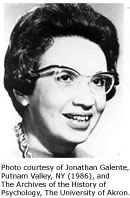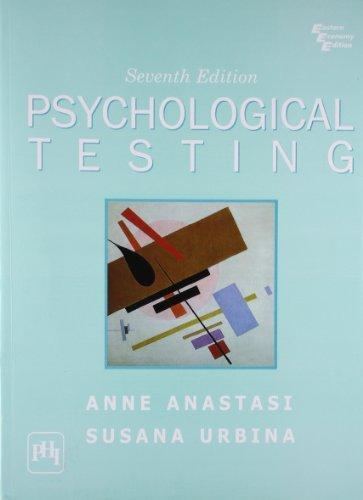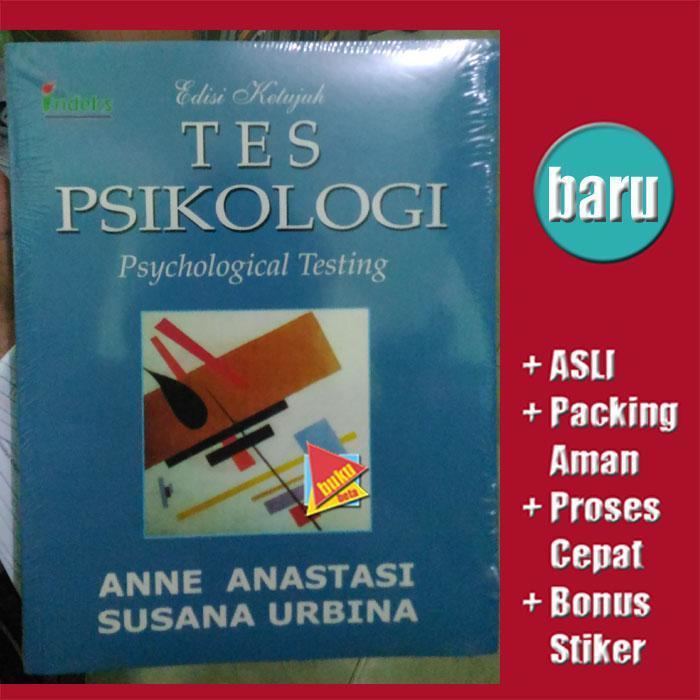Nationality United States Known for Psychological Testing | Name Anne Anastasi Fields Psychology | |
 | ||
Notable awards Books Psychological testing, Fields of applied psychology Similar People Susana Urbina, Donald Baer, Sidney W Bijou | ||
ALTA's Anne Anastasi Testifies Before the Financial Services Subcommittee
Anne Anastasi (December 19, 1908 – May 4, 2001) was an American psychologist best known for her pioneering development of psychometrics. Her seminal work, Psychological Testing, remains a classic text in which she drew attention to the individual being tested and therefore to the responsibilities of the testers. She called for them to go beyond test scores, to search the assessed individuals’ history to help them to better understand their own results and themselves.
Contents
- ALTAs Anne Anastasi Testifies Before the Financial Services Subcommittee
- Social Scientists Refute Theory of Black Intellectual Inferiority
- Problems addressed
- Methods
- Difference between aptitude and achievement test
- Theoretical stance
- Criticism
- References

Known as the “test guru,” Anastasi focused on what she believed to be the appropriate use of psychometric tests. As stated in an obituary, “She made major conceptual contributions to the understanding of the manner in which psychological development is influenced by environmental and experiential factors. Her writings have provided incisive commentary on test construction and the proper application of psychological tests.”. According to Anastasi, such tests only revealed what the test-taker knows at the time; they did not explain test scores. In addition, any psychometric measurement must take into account that aptitude is context-dependent. Anastasi stressed the importance of the role of the tester to correctly select, conduct, and evaluate tests.

She was president of the American Psychological Association in 1972, the third ever woman to be elected. In 1987, she was awarded the National Medal of Science.

Social Scientists Refute Theory of Black Intellectual Inferiority
Problems addressed

Anastasi’s (1983) essay “What Do Intelligence Tests Measure?” aimed to correct misinterpretations regarding the understanding and use of aptitude and personality tests. Anastasi pointed out that the “testing boom” of the 1920s caused the term IQ to be adopted and misused by the general public. According to Anastasi, the misappropriation of the term created connotations that intelligence is heritable, stable throughout one’s lifespan, and resistant to change.

In contrast, Anastasi emphasized that psychometric scores convey an individual’s present status of what he or she knows. She cautioned against interpreting such tests as serving a strong predictive function, as scores only indicated to what degree a person acquired the knowledge and skills for the criterion of a given test. They evaluate for what is in high demand within a specific context; what an individual can achieve in the future depends not only on his or her present intellectual status as determined by the test, but also on subsequent experiences. Therefore, Anastasi advocated against psychometric tests definitively labelling a person, as they assess for specific types of knowledge and do not account for how intelligence can change over time.
Important to Anastasi was an understanding of the cultural frames of reference within which a test is developed. She stated that “No intelligence test can be culture free, because human intelligence is not culture free”. Therefore, according to Anastasi, the first step in developing an intelligence test within a given culture was formulating a task analysis in order to determine how well individuals gain knowledge valued within that culture.
Methods
Anastasi mostly applied existing methods to individual and group ability testing, as well as self-report inventories and measuring interests and attitudes. She followed the methodological principles of norms, reliability, validity, and item analysis. The essay “Psychological Testing: Basic Concepts and Common Misconceptions,” encapsulates Anastasi’s methodological positions. Anastasi stressed that, in order to evaluate any psychometric test, the tester must be knowledgeable of the main features of the tests, particularly as they apply to norms, validity, and reliability. Her approach to standard scores and standard deviation was one in which she believed that understanding statistical concepts was essential to understanding the meaning of statistical computation.
In regards to criterion-referenced tests, Anastasi diverged from educational psychologist Robert Glaser, who first introduced the concept in 1963. Instead of approaching such tests as fundamentally different from norm-referenced tests, Anastasi maintained that the two could be combined to give a more comprehensive evaluation of the individual's test performance. An example is the Stanford Diagnostic Test in reading and mathematics, which assesses specific subject mastery by combining both interpretations.
Anastasi recognized that there are many types of test reliability. However, when dealing with standardized testing, much of the variance in reliability can be minimized by controlling such conditions as the testing environment, rapport, instructions, and time limits.
In contrast with the belief that there are three kinds of validity - content validity, criterion validity, and construct validity - Anastasi espoused to the then-growing belief of the mid-1980s that many more procedures could be used to build validity into a test. Defining the constructs to be assessed initiates the validation process. It culminates with “validating and cross-validating various scores through statistical analyses against external, real-life criteria”.
Difference between aptitude and achievement test
In Psychological Testing: Basic Concepts and Common Misconceptions, Anastasi clarified differences between types of tests. Two differences between aptitude tests and achievement tests are test use and the degree of experiential specificity forming the foundation of the tests’ construction. Achievement tests are used to assess current status; aptitude tests can predict future performance as defined by their specific criteria. Experiential specificity is narrowly defined for achievement tests, such as SAT Subject Tests. In contrast, the Stanford-Binet Intelligence Scales aptitude tests are based on broad knowledge of American culture beginning in the twentieth century.
Theoretical stance
Anastasi’s theoretical framework that ability or intelligence change with experience and that their cultural context dictates their parameters informed her methodological approach to psychometric testing. Tests should be selected and used while bearing in mind their contextual appropriateness and limitations. She emphasized that tests serve specific functions in Western society, such as school/occupational placement or to assess for mental disabilities.
Criticism
The 1955 first edition of Psychological Testing was criticized for attributing test results only to individual differences, instead of recognizing that “‘occasional differences’ are also measured by means of tests". In the latest edition of the book, Anastasi and her co-author Susana Urbina suggested that more accurate results can be obtained by combining information from several fairly homogeneous tests. Each one would cover a single trait, or different aspect of the criterion.
